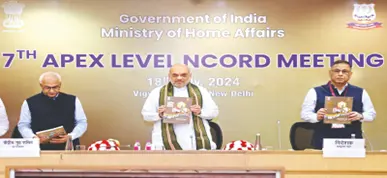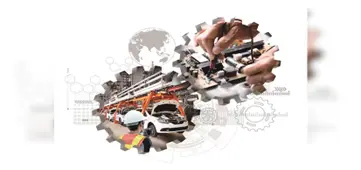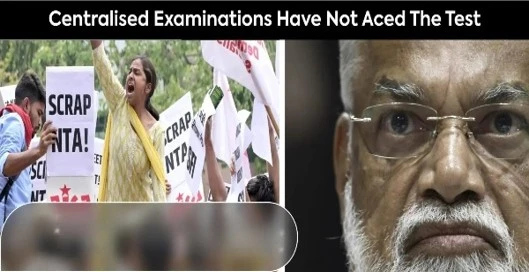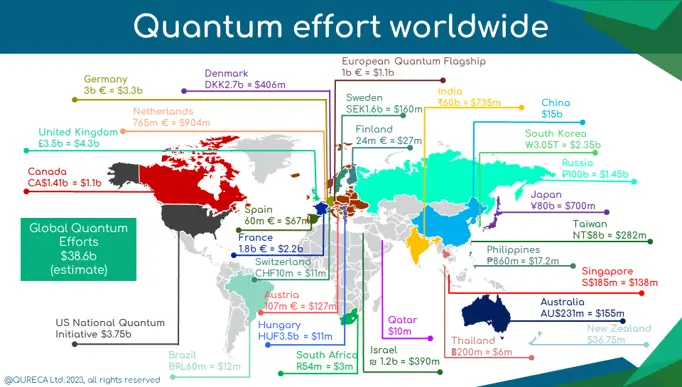Monday, 22nd July 2024
Living in Denial About Unemployment
Why in the news?
- Recently, the Prime Minister cited a Reserve Bank of India (RBI) report claiming the creation of 8 crore jobs over the past 3-4 years, countering opposition claims of high unemployment.
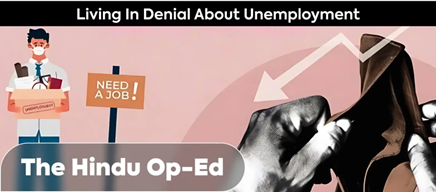
- However, contrasting reports from financial institutions and data-gathering agencies paint a different picture, highlighting the complexities and discrepancies in employment data.
Conflicting Reports and Statements:
- Prime Minister's Assertion:
- Based on the RBI's 'India KLEMS Database,' which details methodologies and measures of productivity, including labour employment.
- The State Bank of India (SBI) supported this narrative, stating that 8.9 crore jobs were created in manufacturing and services between FY14 and FY23.
- Contrasting Data from CMIE:
- Centre for Monitoring Indian Economy (CMIE) reported an unemployment rate of 9.2% in June 2024, up from 7% the previous month.
- This discrepancy between official and independent reports underscores the ongoing debate over the true state of employment in India.
Analysis of Ground Realities and Data Discrepancies:
- Massive Turnout for Job Examinations:
- In February, approximately 47 lakh applicants appeared for an exam to fill around 60,000 constable positions in Uttar Pradesh.
- In 2022, the Railway Recruitment Board's Non-Technical Popular Categories (NTPC) exam attracted 1.25 crore applicants.
- These statistics highlight the desperation among job seekers and the fierce competition for stable employment.
- Protests and Discontent:
- The announcement of the Agnipath scheme in 2022, proposing short-term recruitment for the armed forces, led to widespread unrest.
- Protests reflected frustration over the lack of permanent job opportunities and perceived instability of the proposed scheme.
- Discrepancies in Employment Data:
- Official data often paints a rosier picture, citing significant job creation and low unemployment rates.
- Independent agencies like CMIE report higher unemployment rates, suggesting a disconnect between official narratives and ground realities.
- Differences in data collection methodologies and definitions of employment contribute to these discrepancies.
- Periodic Labour Force Survey (PLFS) includes individuals engaged in any form of work.
- CMIE adopts a stricter definition, counting only those earning an income from work as employed.
Plight of Educated Youth and Its Social and Economic Implications:
- Challenges for Educated Youth:
- Despite holding degrees and qualifications, many young people struggle to find suitable employment.
- High turnout for exams and subsequent protests indicates that even those with higher education face job market challenges.
- This mismatch between qualifications and available job opportunities wastes potential talent and demoralises the youth.
- Economic and Social Implications:
- High levels of unemployment and underemployment limit individuals' purchasing power, stifling consumer demand and hindering economic growth.
- Social implications include increased crime rates, social unrest, and mental health issues.
- Protests following the Agnipath scheme announcement highlight the potential for unrest when a significant portion of the population feels neglected and hopeless.
Complexity of Indian Employment Data and Discrepancies Between PLFS and CMIE Data:
- India KLEMS Data:
- Designed to measure productivity growth in the Indian economy, relying on official sources like Employment and Unemployment Surveys (EUS) and PLFS.
- Does not independently estimate employment, raising questions about its reliability as an employment metric.
- Complexity of Employment Data:
- The large unorganised sector employs 94% of the labour force, with reliable data for this sector being scarce.
- Significant economic shocks (demonetization, GST implementation, COVID-19 pandemic) have disproportionately affected the unorganised sector.
- Discrepancies Between PLFS and CMIE Data:
- PLFS counts individuals as employed even if they do not earn an income from their work.
- CMIE adheres to the International Labour Organization (ILO) definition, counting only those who earn from their work as employed.
- This fundamental difference results in significantly lower labour force participation rates reported by CMIE compared to PLFS.
Way Forward:
- Addressing Discrepancies and Improving Data Collection:
- Addressing these discrepancies and improving data collection methodologies is crucial for formulating effective employment policies.
- Need for Action on Employment Issues:
- Admitting and acting on these issues, rather than denying them, is essential for addressing the employment crisis in India.
Conclusion
The employment debate in India underscores the difficulty of acquiring accurate data in a dynamic economy. Despite official optimistic job creation reports, ground realities show persistent unemployment, especially among youth. Addressing this issue necessitates better data accuracy and effective unemployment policies.
|
UPSC Civil Services Examination PYQ Mains Q:1 Besides the welfare schemes, India needs deft management of inflation and unemployment to serve the poor and the underprivileged sections of society. Discuss. (2022) Q:2 “While we flaunt India’s demographic dividend, we ignore the dropping rates of employability.” What are we missing while doing so? Where will the jobs that India desperately needs come from? Explain (2014) |
Source: TH
India, Japan Plan Joint Carbon Crediting Mechanism
Why in the news?
- Recently, India and Japan plan to sign a Memorandum of Cooperation to establish a Joint Crediting Mechanism (JCM) where emission reduction credits will be shared.
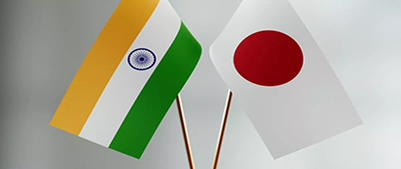
Background:
- To limit global warming to within 2°C, ideally no more than 1.5°C, global greenhouse gas (GHG) emissions need to be reduced by 25 to 50% over this decade.
- Nearly 170 countries have submitted their nationally determined contributions (NDCs) under the 2015 Paris Agreement, agreeing to update them every five years.
- NDCs are climate commitments by countries to achieve net-zero emissions.
- India aims to achieve net zero emissions by 2070.
- One mitigation strategy to meet NDCs is carbon markets.
- Article 6 of the Paris Agreement allows countries to use international carbon markets to fulfil their NDCs.
What are Carbon Markets?
- Definition: Carbon markets are tools for pricing carbon emissions, establishing trading systems where carbon credits or allowances can be bought and sold.
- Carbon Credit: A tradable permit equal to one tonne of carbon dioxide removed, reduced, or sequestered from the atmosphere.
- Carbon Allowances: Caps determined by countries or governments based on their emission reduction targets.
- Global Interest: 83% of NDCs submitted by countries mention their intent to use international market mechanisms to reduce greenhouse gas emissions.
Two Types of Carbon Markets:
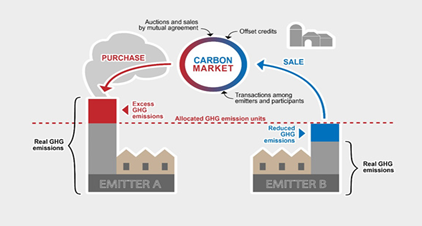
- Compliance Market:
- Set up by national, regional, or international policies and are officially regulated.
- Entities are issued annual allowances or permits equal to the emissions they can generate.
- If emissions exceed the capped amount, companies must purchase additional permits through official auctions or from companies with surplus allowances.
- The market price of carbon is determined by market forces through trading in emissions allowances.
- Voluntary Market:
- Emitters—corporations, private individuals, and others—buy carbon credits to offset the emission of one tonne of CO2 or equivalent greenhouse gases.
- Carbon credits are created by activities that reduce CO2, such as afforestation.
- Corporations purchase carbon credits from entities engaged in projects that reduce, remove, capture, or avoid emissions.
Carbon Market in India:
- India has historically invested in producing carbon credits and exporting them internationally.
- Between 2010 and June 2022, India issued 35.94 million carbon credits, nearly 17% of all voluntary carbon market credits issued globally.
- The government now intends to restrict exports, develop a local domestic market for carbon credits, and boost internal trade.
- India’s current carbon market is voluntary, where private parties exchange certified reductions of GHGs for carbon credits.
Legislative Push:
- The Parliament passed the Energy Conservation (Amendment) Act, 2022, to make the use of clean energy mandatory and pave the way for setting up carbon markets.
- The Act aims to develop India’s carbon market and boost the adoption of clean technology.
- It empowers the central government to specify a carbon credit trading scheme and issue carbon credit certificates to compliant entities, allowing them to purchase or sell the certificate.
Challenges of Domestic Carbon Trading Mechanism:
- Monitoring and Oversight:
- Accurate monitoring is challenging as carbon credit projects are often remote, making oversight difficult without biassed information from developers or third-party verifiers.
- Additionality:
- Determining if carbon credits are for genuine emission reductions is complex. For example, credits should not be awarded if a company switches to solar power for cost benefits rather than environmental reasons.
- Baseline Determination:
- Establishing accurate baselines for emissions reduction projects is complex and critical to avoid over-crediting or under-crediting.
- Regulatory Framework:
- A robust regulatory framework is essential. Without clear regulations, the system can be exploited, undermining the market's credibility.
- Market Liquidity:
- Sufficient market liquidity is necessary for smooth carbon trading. Low liquidity can lead to price volatility and reduced confidence among participants.
- Verification and Reporting:
- Reliable verification and reporting mechanisms are needed to ensure the integrity of carbon credits, but these can be resource intensive.
India, Japan Plan Joint Carbon Crediting Mechanism:
- Objective: India and Japan plan to enter into a carbon trading and carbon credit adjustment mechanism.
- Memorandum of Cooperation: The two countries will sign a Memorandum of Cooperation for setting up a Joint Crediting Mechanism (JCM) under Article 6.2 of the Paris Agreement, with emission reduction credits shared.
Key Features of the JCM:
- A joint committee will be established to develop rules and guidelines for the JCM, covering project cycle procedures, methodologies, project design documents, monitoring, and designation of third-party entities.
- Decisions on project registration, crediting periods, credit sharing, and issuance will be made with prior confirmation from both governments.
- JCM credits will contribute to the NDCs of both countries, ensuring no double counting.
- Part of the JCM credits can also be authorised for international mitigation purposes.
- Japan will support technology transfer, finance, and capacity building for the JCM.
|
UPSC Civil Services examination PYQ Mains Q:1 Clean energy is the order of the day.’ Describe briefly India’s changing policy towards climate change in various international fora in the context of geopolitics. (2022) |
Source: TH
Implementation of the Plastic Waste Trading Scheme
Why in the news?
- The Central Pollution Control Board (CPCB) has initiated a nationwide audit of around 800 plastic waste recyclers.
- This action follows the discovery that four firms in Gujarat, Maharashtra, and Karnataka issued approximately 600,000 fraudulent certificates under the Extended Producer Responsibility (EPR) scheme.
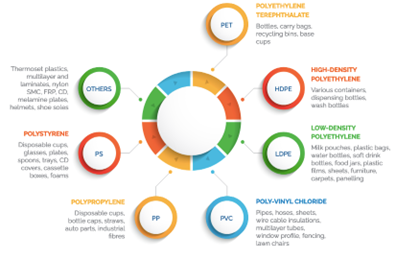
About the Plastic Waste in India:
- Plastic Waste Generation:
- According to the Minister of Environment (MOEFCC), over 34 lakh tonnes of plastic waste were generated in 2019-20, up from 30.59 lakh tonnes in 2018-19.
- This represents a more than doubling of plastic waste over the past five years, with an average annual increase of 21.8%.
- Regulatory Response:
- To address this issue, the government has implemented the Plastic Waste Management Rules, 2016, amended in 2018 and 2021.
Efforts for the Scientific Management of Plastic Waste in India:
- Plastic Waste Management Rules, 2016:
- Overview: These rules require plastic waste generators to reduce waste, ensure segregated storage, and hand over waste to local bodies or agencies.
- Objectives:
- Increase the minimum thickness of plastic carry bags from 40 to 50 microns and mandate a minimum thickness of 50 microns for plastic sheets to facilitate better collection and recycling.
- Extend the applicability from municipal to rural areas.
- Include responsibilities for producers and generators.
- Extended Producer Responsibility (EPR):
- Scope: Producers, importers, and brand owners must manage the waste generated by their products. This includes engaging with local governments to create waste management plans.
- Amendments to Plastic Waste Management Rules:
- 2018 Amendment: Focuses on Multilayered Plastics (MLP), mandating their phase-out if non-recyclable or non-energy recoverable.
- 2021 Amendment: Prohibits specific single-use plastics (SUP) with low utility and high littering potential by 2022. The ban, notified on August 12, 2021, came into effect on July 1, 2022.
How Plastic Waste Recyclers Violated the EPR Scheme:
- EPR Certificates:
- Regulations:
- Under the Plastic Waste Management Rules 2016, companies using plastic packaging must register with CPCB.
- They are required to recycle a specified percentage of their plastic waste from the previous two years.
- In 2022-23, companies needed to recycle 70% of this waste. Failure to meet these targets results in fines.
- Issuance:
- Registered recyclers generate certificates for each tonne of plastic recycled.
- These certificates are valid only if recyclers can prove the sale of the recycled plastic.
- Certificates are managed through a CPCB portal for transactions.
- Regulations:
- Violations Identified:
- Findings: Four recycling companies issued more EPR certificates than their recycling capacity and failed to provide proof of sales to CPCB.
- Possible Reasons for Violation:
- Clarity Issues: Lack of clarity on the EPR scheme’s mechanics among recyclers, similar to early challenges with GST or online income tax filing.
|
UPSC Civil Services Examination, Previous Year Question (PYQ) Prelims Q:1 Why is there a great concern about the ‘microbeads’ that are released into the environment? (2019)
Ans: (a)
Q:2 In India, ‘extend producer responsibility’ was introduced as an important feature in which of the following? (2019)
Ans: (c)
Mains: Q:1 What are the impediments in disposing of the huge quantities of discarded solid waste which are continuously being generated? How do we safely remove the toxic wastes that have been accumulating in our habitable environment? (2018) |
Source: TH
SC to Examine Article 361 Granting Immunity to Governors
Why in the news?
- The Supreme Court of India has agreed to examine a plea filed by a woman staff member of the West Bengal Raj Bhawan, who has accused Governor CV Ananda Bose of sexual harassment.
- The plea challenges the immunity granted to the governor of a state under Article 361 of the Indian Constitution.
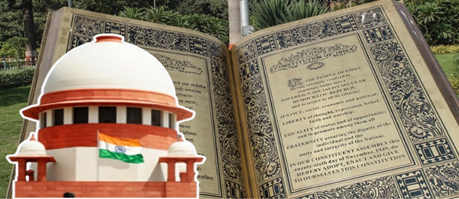
What is the Role of a Governor in India?
- Constitutional Provisions:
- Part VI (Article 153 to Article 162): Covers everything related to the office of Governor (appointment, powers, etc.).
- Article 153: There shall be a Governor for each state, and the same person can be the Governor for two or more states.
- Article 154: The executive power of the state shall be vested in the Governor and exercised by him/her in accordance with the Constitution.
- Article 155: The Governor of a state shall be appointed by the President by warrant under his hand and seal.
- Article 156: The Governor shall hold office during the pleasure of the President, but his normal term of office will be five years.
- Role:
- The Governor is the constitutional head of the state, bound by the advice of his/her council of ministers.
- Acts as a vital link between the Union and the state government.
- Functioning of the Office Over the Years:
- Discretionary Powers (Article 163): Such as giving or withholding assent to a bill passed by the state legislature.
- These powers enable Governors to make critical decisions during times of political or administrative uncertainty.
- Judicial Review: Although constitutionally granted, these powers are subject to judicial review to ensure they are exercised within legal bounds.
What is Article 361 of the Indian Constitution?
- About Article 361:
- Grants the President of India and Governors of states immunity from legal proceedings during their term in office.
- An exception to Article 14 (right to equality) of the Constitution.
- Description:
- Criminal Proceedings: No criminal cases can be initiated or continued, and no arrest or imprisonment orders can be issued by any court.
- Civil Proceedings: Mandates a two-month notice for any civil proceedings related to personal acts.
- No Arrest or Imprisonment: Restricts any arrest or imprisonment orders during their term.
- Aim: To ensure they are not answerable to any court for the exercise and performance of their official powers and duties.
What is the Woman Petitioner Seeking?
- Call for Immediate Investigation:
- The investigation cannot be deferred until the Governor leaves office.
- Immunity under Article 361 should not bar the investigation, especially given the time-sensitive nature of such probes.
- Framing Specific Guidelines:
- The plea requests directions to frame specific guidelines under which Governors enjoy immunity from criminal prosecution.
- Questioning Absolute Immunity:
- Contends that immunity under Article 361 should not be absolute, allowing illegal acts or acts that violate fundamental rights under Part III of the Constitution.
- Argues that immunity should not impair police powers to investigate the offence or name the perpetrator in a complaint or FIR.
Significance of SC’s Decision to Examine Article 361: The SC’s decision to examine Article 361 could have significant implications for:
- The interpretation of constitutional protections for high office holders.
- Accountability mechanisms for addressing misconduct.
- The case will potentially redefine the balance between constitutional immunity and accountability for high-ranking officials in India.
Source: IE
Assam’s Moidams to be considered for World Heritage List
Why in the news?
- Assam's 'Moidams,' the mound burial system of the Ahom dynasty, will be considered for inclusion in the World Heritage Sites list at the 46th session of the World Heritage Committee.
- This session, hosted by India for the first time, will be held from July 21 to 31 at Bharat Mandapam in Delhi.
- Currently, 1,199 properties from 168 countries are on UNESCO's World Heritage list.
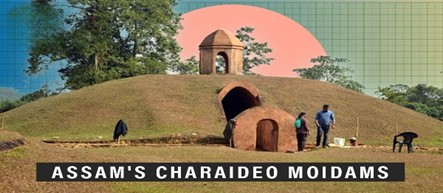
United Nations Educational, Scientific and Cultural Organization (UNESCO):
- Headquarters: Paris, France.
- Founded: 1945 as the successor to the League of Nations's International Committee on Intellectual Cooperation.
- Purpose: To promote world peace and security through international cooperation in education, natural sciences, social/human sciences, culture, and communication/information.
- Role in Sustainable Development: Member of the United Nations Sustainable Development Group, contributing to the SDGs in the 2030 Agenda.
- Activities: Translation and dissemination of world literature, establishment and protection of World Heritage Sites, bridging the global digital divide, etc.
The World Heritage Committee
- Composition: Representatives from 21 States Parties elected by their General Assembly of UNESCO.
- Responsibilities:
- Implementing the World Heritage Convention.
- Determining the use of the World Heritage Fund.
- Allocating financial assistance upon requests from States Parties.
- Inscribing properties on the World Heritage List.
- Examining conservation reports of inscribed properties.
- Adding or removing properties from the List of World Heritage in Danger.
World Heritage Sites:
- Definition: Sites with “outstanding universal value” under the Convention Concerning the Protection of the World Cultural and Natural Heritage 1972.
- Categories:
- Cultural Heritage Sites: Historic buildings, town sites, archaeological sites, works of monumental sculpture or painting.
- Natural Heritage Sites: Natural areas with excellent ecological and evolutionary processes, endangered species.
- Mixed Heritage Sites: Contain elements of both natural and cultural significance.
- India’s Status:
- 42 world heritage sites: 34 cultural properties, 7 natural properties, and 1 mixed site.
- Ranks second in the Asia-Pacific Region.
- 57 sites on the tentative list.
- Global Leaders: Italy (59), China (57), Germany (52), France (52), Spain (50).
Assam’s Moidams to be Considered for World Heritage List:
- Historical Significance:
- The 700-year-old mound-burial system of the Ahom dynasty.
- First nomination from the northeastern state in the cultural category.
- Assam already has two world heritage sites in the natural category: Kaziranga National Park and Manas National Park.
- Description of Moidams/Maidams:
- Mound-Burial System: The burial system of the Ahom dynasty (13th century-19th century).
- Location: Charaideo district, more than 400 km east of Guwahati.
- Historical Context: Charaideo was the first capital of the Ahom dynasty founded by Chao Lung Siu-Ka-Pha in 1253.
- Evolution of Practices: Initially, the deceased and their paraphernalia were buried. Post 18th century, Ahom rulers adopted Hindu cremation, entombing cremated bones and ashes in Moidams.
- Veneration: Moidams enshrine the mortal remains of Ahom royalty and are highly venerated.
- Preservation: Despite early 20th-century vandalism by treasure seekers, the Moidams in Choraideo have been systematically restored to safeguard structural integrity
Source: TOI
Anti-reservation protests in Bangladesh
Why in the news?
- Recently, protests against job quotas in Bangladesh have turned violent, resulting in over 100 deaths and leading to a siege of Dhaka.
- In response, the Sheikh Hasina government has imposed a curfew and an internet shutdown.
- New Delhi has refrained from commenting, considering it an internal matter for Bangladesh.
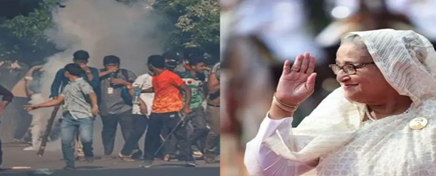
- Meanwhile, the Indian mission in Bangladesh has helped 978 Indians return home: 778 via land borders and around 200 by flights.
- The mission is also in contact with more than 4,000 Indian students still in Bangladesh, according to the Ministry of External Affairs.
Background - Reservation Policy of Bangladesh:
- Initial System (1972): Notified on September 5, 1972, reserving 30% of government and semi-government posts for freedom fighters and 10% for women.
- Post-Assassination (1975): After Sheikh Mujibur Rahman's assassination in August 1975, quotas were effectively frozen until 1996 when Hasina became Prime Minister. Benefits were later extended to the children of freedom fighters.
- Changes Post-2001: The process slowed after the Awami League lost power in 2001. Hasina returned as Prime Minister in 2009, and by 2011, the benefits were extended to the grandchildren of freedom fighters.
- Quota Withdrawal (2018): The Hasina government scrapped the freedom-fighter and other quotas in 2018. This decision was challenged, and the High Court ruled the government's decision arbitrary, maintaining the quotas.
Why are Students Protesting in Bangladesh?
- Opposition to Quota Return:
- Youths are opposing the return of a 30% quota in government employment for freedom fighters' descendants.
- Inflammatory Statements:
- The situation escalated when PM Sheikh Hasina equated protesters with the descendants of Razakars.
- Court Order Sparks Violence:
- The High Court reinstated the 30% job quota on June 5, overturning the 2018 decision.
- The government has appealed, and the Supreme Court will hear the case on August 7.
- Protests Since April:
- Students and teachers have been demanding quotas be capped at 10%, leading to clashes with police and the Bangladesh Chhatra League.
- Economic Discontent:
- High inflation, unemployment, and shrinking foreign exchange reserves are fueling the protests.
- More than two-thirds of Bangladesh's 170 million population is in the working age group (15-64), with 1.9 million young people entering the job market annually.
- Current Quota System:
- Besides the 30% for freedom fighters, there are quotas of 10% for women and backward districts, 5% for tribal communities, and 1% for persons with disabilities, totaling 56%.
- Government jobs are highly sought after due to their stability and guaranteed income.
- Employment Statistics:
- Between 2019 and 2023, only 3.5 lakh government appointments were made, leaving over 5 lakh positions vacant.
Razakars:
- Role in East Pakistan:
- The Pakistan Armed Forces and radical Islamists formed militias (Razakars, al-Badr, al-Shams) to suppress civil liberties, target freedom fighters, and terrorise civilians.
- They committed genocidal acts with the support of the Pakistan Armed Forces.
- Historical Origin:
- The term "Rezakar" originated in Hyderabad (modern-day India) and referred to "volunteers."
- In India, the Rezakars were a paramilitary force in Hyderabad opposing integration with India post-1947, founded by Majlis-e-Ittehadul Muslimeen leader Bahadur Yar Jung and led by Qasim Rizvi.
- After their defeat by the Indian Armed Forces in Operation Polo in 1948, Rizvi emigrated to Pakistan.
Source: IE
National Clean Air Programme
Why in the news?
- A new study by the Centre for Science and Environment (CSE) highlights that 64% of the funds allocated under the National Clean Air Programme (NCAP) are being spent on road dust mitigation to reduce PM10 pollution.
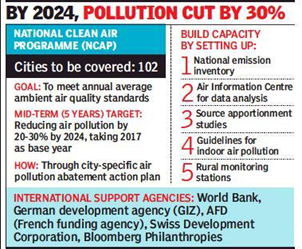 About National Clean Air Programme:
About National Clean Air Programme:
- Launch: Initiated in January 2019 by the Ministry of Environment, Forest, and Climate Change.
- Purpose: A long-term, national strategy designed to address air pollution in a comprehensive manner.
Objectives:
- Mitigation Measures: Stringently implement actions to prevent, control, and abate air pollution.
- Monitoring Network: Strengthen air quality monitoring systems nationwide.
- Public Awareness: Increase public awareness and capacity-building efforts.
Targets:
- Initial Target: Reduce PM10 concentrations by 20-30% from 2017 levels by 2024.
- Revised Target: Achieve a reduction of up to 40% in PM10 levels or meet national standards (60 µg/m³) by 2025-26.
Implementation:
- Regulatory Framework: Executed in accordance with the Air (Prevention and Control of Pollution) Act, 1981 by the Central Pollution Control Board (CPCB).
- Coverage: Focused on 131 non-attainment cities across India.
- Action Plans: City-specific action plans include measures to enhance monitoring, reduce vehicular and industrial emissions, and raise public awareness.
- Monitoring:
- The implementation is overseen by Central and State Committees, including the Steering Committee, Monitoring Committee, and Implementation Committee.
- State Pollution Control Boards regularly monitor and report air quality.
Challenges Related to NCAP:
- Lack of Fund Utilisation: Only 60% of allocated funds have been used, with 27% of cities spending less than 30% of their budgets. Visakhapatnam and Bengaluru have utilised 0% and 1% of their funds, respectively.
- Implementation Delays: Delays in implementing City Action Plans (CAAPs) are due to bureaucratic hurdles, including slow approvals and lack of standard operating procedures.
- Technical Challenges: Difficulties include defining technical specifications for tenders and procuring essential equipment like mechanical sweepers and electric buses, leading to further delays.
Conclusion:
Adopt stricter monitoring mechanisms to guarantee timely and effective use of funds. Conduct regular audits and reviews to detect underutilization and take corrective measures swiftly.
|
UPSC Civil Services Examination Previous Year Question (PYQ) Prelims Q:1 In the cities of our country, which among the following atmospheric gases are normally considered in calculating the value of the Air Quality Index? (2016)
Select the correct answer using the code given below:
Ans: (b)
Mains Q:1 Describe the key points of the revised Global Air Quality Guidelines (AQGs) recently released by the World Health Organisation (WHO). How are these different from its last update in 2005? What changes in India’s National Clean Air Programme are required to achieve revised standards? (2021)
Q:2 What are the key features of the National Clean Air Programme (NCAP) initiated by the government of India? (2020) |
Source: IE
Rapid Apophis Mission for Space Safety (RAMSES)
Why in the news?
- The European Space Agency (ESA) has announced its new mission, RAMSES, designed for planetary defence.
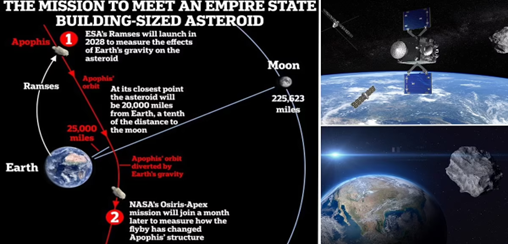
About the Rapid Apophis Mission for Space Safety (RAMSES):
- Objective: RAMSES will intercept and accompany the asteroid 99942 Apophis during its close flyby of Earth in 2029.
- Details of Apophis: Approximately 375 metres in diameter, Apophis will pass within 32,000 km of Earth on April 13, 2029, marking the closest known approach of an asteroid of this size.
- Visibility: The asteroid will be visible to the naked eye from much of Europe, Africa, and parts of Asia.
- Safety: There is no risk of collision with Earth for at least the next 100 years.
- Scientific Goals: The mission will study how Earth's gravity affects the asteroid, enhancing our planetary defence capabilities for future threats.
- Collaboration: RAMSES will coordinate with NASA's OSIRIS-APEX mission, which will arrive at Apophis shortly after the flyby, facilitating comparative studies of the asteroid's properties.
Source: IE
Radome
Why in the news?
- The Defence Metallurgical Research Laboratory (DMRL) has recently achieved a significant milestone by developing domestically produced fused silica radomes for missile systems.

About Radome:
- A radome is a protective enclosure designed to shield radar or antenna systems from environmental conditions while allowing electromagnetic signals to pass through without interference.
- Radomes can be constructed from rigid, self-supporting materials or flexible, air-inflated fabrics, with various shapes tailored to specific applications.
- The primary function of a radome is to maintain the antenna’s performance and functionality by minimising the impact of environmental factors on signal transmission and reception.
- Radomes also serve to conceal the antenna’s electronic components for security reasons and prevent damage from accidental collisions with nearby objects, especially in rotating antennas.
- They contribute to the durability and operational efficiency of the antenna they encase.
Fused Silica Radomes of DMRL:
- Fused silica is chosen for radomes due to its outstanding electromagnetic and mechanical properties and its capacity to endure rapid temperature changes.
- The DMRL has successfully utilised cold isostatic pressing (CIP) technology to manufacture these radomes with high precision and desired properties.
- CIP involves applying high pressure uniformly from all directions to compress powdered materials, resulting in a dense, homogeneous structure with enhanced strength and performance.
- The DMRL employs CIP to shape powdered fused silica as required, followed by sintering to produce a robust and compact final structure.
Key Facts about Defence Metallurgical Research Laboratory (DMRL):
- About: The DMRL is a research facility under the Defence Research and Development Organisation (DRDO).
- Location: Hyderabad.
- Responsibilities: The laboratory focuses on the development of advanced metallic and ceramic materials and processing technologies for critical defence applications.
- Core Competencies:
- Product engineering, production support, and performance analysis of metals, alloys, and composites.
- Process development and surface engineering.
- Design and development of specialty alloys, intermetallics, ceramics, and composites.
- Extractive metallurgy of titanium and magnesium.
- Expertise in process-structure-property-performance relationships of advanced materials.
Source: ID
Zebra Mussel
Why in the news?
- The zebra mussel, an invasive species known for its potential to devastate aquatic ecosystems, has been detected for the first time in the Colorado River, a vital waterway in the American Southwest.
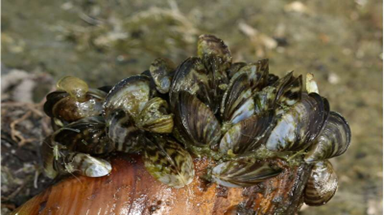
About Zebra Mussel:
- Scientific Name: Dreissena polymorpha
- Description: A small, fingernail-sized mollusk with a distinct flat-bottomed ‘D’ shape and black zigzag stripes against a cream-coloured background.
- Native Range: Originates from the Caspian and Black Seas, south of Russia and Ukraine.
- Introduction to North America: Entered the Great Lakes in the late 1980s via ballast water from ships and has since spread across much of eastern Canada and the United States.
- Habitat: Lives underwater, attaching to various surfaces including rocks, wood, plants, native mussels, pipes, docks, boat lifts, swim rafts, moored watercraft, and debris.
- Life Cycle:
- Larval Stage: Known as “veliger,” is microscopic.
- Growth: Reaches up to two inches in length.
- Reproduction: Begins at around two years of age, with females capable of releasing up to one million eggs per breeding season.
- Lifespan: Generally, between two and five years.
Impacts:
- Ecological:
- Filter Feeding: Removes phytoplankton from the water, disrupting food webs.
- Competition: Outcompetes native mussels for food and attaches to them, causing suffocation.
- Commercial:
- Infrastructure Damage: Their clustering on water-intake valves, pipes, and other structures can lead to significant damage and increased maintenance costs.
Source: PH
Gender Gap in Education
Context:
- The World Economic Forum's 18th edition of the Global Gender Gap Report for 2024, which benchmarks gender parity across 146 economies, ranked India at 129th.
- India's decline in the education sector contributed to its fall by a few positions this year.
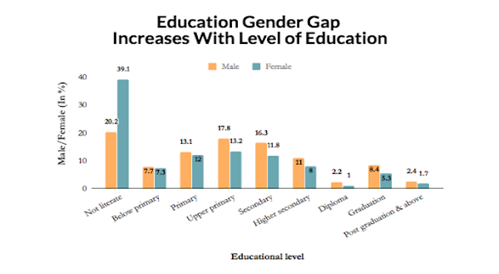
What is the Global Gender Gap Index?
About:
- The Global Gender Gap Index benchmarks countries based on progress towards gender parity in four key dimensions: health, education, economy, and politics.
- Scores range from 0 to 1, where 1 represents full gender parity and 0 signifies complete disparity.
- Established in 2006, it is the longest-standing index tracking progress in closing gender gaps over time.
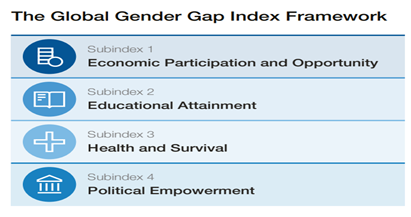
Objectives:
- To monitor and track the relative gaps between women and men across health, education, economy, and politics.
- To provide a tool for stakeholders to set priorities and address gender disparities within each country's specific economic, political, and cultural context.
Key Findings of the Global Gender Gap Report 2024:
- Overall Findings:
- The global gender gap score is 68.5%, indicating 31.5% of the gap remains unaddressed. Progress has been minimal, with only a 0.1% improvement from 2023.
- At the current pace, achieving full gender parity will take 134 years, significantly beyond the 2030 SDG target.
- The largest gaps are in Political Empowerment (77.5% unaddressed) and Economic Participation & Opportunity (39.5% unaddressed).
- Top-Ranking Countries:
- Iceland (93.5%) is the most gender-equal country for the 15th consecutive year, followed by Finland, Norway, New Zealand, and Sweden.
- Seven of the top 10 countries are from Europe: Iceland, Finland, Norway, Sweden, Germany, Ireland, and Spain.
- Other regions represented include Eastern Asia and the Pacific (New Zealand at 4), Latin America and the Caribbean (Nicaragua at 6), and Sub-Saharan Africa (Namibia at 8).
- Spain and Ireland notably advanced into the top 10, rising 8 and 2 ranks, respectively, compared to 2023.
- Regional Performance:
- Europe leads with 75% of its gender gap closed, followed by Northern America (74.8%) and Latin America & Caribbean (74.2%).
- The Middle East and North Africa have the lowest closure rate at 61.7%.
- Southern Asia ranks 7th out of 8 regions with a gender parity score of 63.7%.
- Economic & Employment Gaps:
- Women’s workforce representation stands at 42% overall and 31.7% in senior leadership roles.
- The "leadership pipeline" shows a 21.5%-point drop from entry-level to managerial positions for women globally.
- The hiring of women into leadership roles has declined in 2023-24 due to worsening economic conditions.
- Care Burden Impact:
- Women’s workforce participation is recovering from increased caregiving responsibilities, underscoring the need for equitable care systems.
- Although equitable care policies like paid parental leave are improving, they remain inadequate in many countries.
- Technology & Skills Gaps:
- Women are underrepresented in STEM fields (28.2%) compared to non-STEM roles (47.3%).
- Gender gaps persist in critical skills areas such as AI, big data, and cybersecurity, which are crucial for the future of work.
India’s Performance in the Gender Gap Report 2024:
- India’s Rank:
- India has fallen two places in the global rankings to 129th out of 146 countries in 2024, compared to 127th in 2023.
- Within South Asia, India is ranked fifth, behind Bangladesh, Nepal, Sri Lanka, and Bhutan. Pakistan is at the bottom of the region.
- Economic Parity:
- India is among the countries with the lowest economic parity levels, alongside Bangladesh, Sudan, Iran, Pakistan, and Morocco.
- The gender parity in estimated earned income is less than 30%.
- Educational Attainment:
- India has achieved the best gender parity in secondary education enrollment.
- Political Empowerment:
- India is ranked 65th globally in political empowerment of women and 10th in terms of parity in years with female/male heads of state over the past 50 years.
- Despite this, women’s representation remains low at the federal level, with 6.9% in Ministerial positions and 17.2% in Parliament.
- Gender Gap Closure:
- India has closed 64.1% of its gender gap as of 2024.
- The decline in ranking from 127th to 129th is attributed to minor decreases in 'Educational Attainment' and 'Political Empowerment,' although there were slight improvements in 'Economic Participation' and 'Opportunity.'
Key Findings and Statistics Regarding Education Attainment:
- Enrolment and Literacy Rates:
- Overall Enrolment: Women have high enrolment rates in primary, secondary, and tertiary education.
- Literacy Rate Gap: The literacy rate gap between men and women is 17.2 percentage points.
- School Population: Girls make up 48% of the school population. While there is a slight decline in secondary education enrolment, the retention rate at the higher secondary level is higher.
- Higher Education:
- Gross Enrolment Ratio (GER): Women’s GER in higher education is 28.5%, slightly higher than the male GER of 28.3%.
- Increase in Enrolment: Female enrolment in higher education has increased by 32% since 2014-15.
- Influencing Factors:
- Infrastructure Development: The construction of more schools since the mid-1990s has significantly boosted girls' enrolment. However, regional disparities remain, with some states lagging in secondary education infrastructure.
- Female Teachers: The presence of female teachers positively influences girls' enrolment. Schools with only male teachers tend to have lower female enrolment due to parental concerns.
- Transportation and Sanitation: Free transportation and cycles have increased enrolment, but inadequate sanitation facilities, especially for menstruating girls, remain a significant barrier.
- Future Challenges:
- Higher Secondary and College Education: While enrolment in higher secondary education is increasing, concerns are growing about boys dropping out.
- STEM Education: Women constitute only 42.5% of students in STEM fields, indicating a need for targeted encouragement.
- Adult Literacy: The 2011 Census reveals a significant gender gap in adult literacy, with 64.63% of women being literate compared to 80.88% of men.
- Recommendations:
- Improving School Infrastructure: Invest in building and maintaining school facilities, especially in rural areas.
- Increasing Female Teacher Presence: Recruit and retain more female teachers to foster a supportive learning environment for girls.
- Enhanced Sanitation Facilities: Ensure proper maintenance of washrooms to prevent dropouts among older girls.
- Focus on Foundational Literacy: Strengthen foundational literacy programs and extend education to rural women to address the adult literacy gap.
Indian Initiatives to Reduce Gender Gap:
- Beti Bachao Beti Padhao (BBBP):
- Objective: Aims to address declining child sex ratio and promote the survival, protection, and education of the girl child.
- Approach: Combines advocacy, awareness, and strengthening of health and education services.
- Mahila Shakti Kendra (MSK):
- Objective: Empowers rural women through community participation.
- Approach: Provides support through grassroots-level institutions like village-level Mahila Shakti Kendra (MSK) for women's empowerment and development.
- Mahila Police Volunteers (MPV):
- Objective: Strengthens women’s safety and security.
- Approach: Enlists female volunteers to assist in addressing issues related to women's safety and support the police in their duties.
- Rashtriya Mahila Kosh (RMK):
- Objective: Provides financial support to economically disadvantaged women.
- Approach: Offers micro-financing to women for starting or expanding small businesses, enhancing their economic status.
- Sukanya Samriddhi Yojna:
- Objective: Encourages savings for the education and marriage of the girl child.
- Approach: Provides tax benefits and higher interest rates on savings accounts specifically for the education and welfare of girls.
- Kasturba Gandhi Balika Vidyalaya (KGBV):
- Objective: Promotes education for girls in disadvantaged regions.
- Approach: Establishes residential schools for girls from marginalised communities to enhance their educational opportunities.
- Political Reservation:
- Panchayati Raj Institutions: 33% of seats reserved for women to increase their representation in local governance.
- Constitution (106th Amendment) Act, 2023: Reserves one-third of all seats in Lok Sabha, State Legislative Assemblies, and the Legislative Assembly of the National Capital Territory of Delhi for women, including reserved seats for SCs and STs.
- Female Entrepreneurship Initiatives:
- Stand-Up India: Facilitates loans to women entrepreneurs for setting up greenfield enterprises.
- Mahila-e-Haat: An online platform to support women entrepreneurs, self-help groups (SHGs), and NGOs by providing a marketplace for their products.
- Entrepreneurship and Skill Development Programme (ESSDP): Provides training and support for women to enhance their entrepreneurial skills and create job opportunities.
|
UPSC Civil Services Examination, Previous Year Question (PYQ) Prelims: Q:1 Which of the following gives ‘Global Gender Gap Index’ ranking to the countries of the world? (2017)
Ans: (a)
Mains: Q:1 Discuss the desirability of greater representation to women in the higher judiciary to ensure diversity, equity and inclusiveness. (2021) |
Source: TH
Share the article
Edukemy’s Current Affairs Quiz is published with multiple choice questions for UPSC exams
MCQ
Get Latest Updates on Offers, Event dates, and free Mentorship sessions.

Get in touch with our Expert Academic Counsellors 👋
FAQs
UPSC Daily Current Affairs focuses on learning current events on a daily basis. An aspirant needs to study regular and updated information about current events, news, and relevant topics that are important for UPSC aspirants. It covers national and international affairs, government policies, socio-economic issues, science and technology advancements, and more.
UPSC Daily Current Affairs provides aspirants with a concise and comprehensive overview of the latest happenings and developments across various fields. It helps aspirants stay updated with current affairs and provides them with valuable insights and analysis, which are essential for answering questions in the UPSC examinations. It enhances their knowledge, analytical skills, and ability to connect current affairs with the UPSC syllabus.
UPSC Daily Current Affairs covers a wide range of topics, including politics, economics, science and technology, environment, social issues, governance, international relations, and more. It offers news summaries, in-depth analyses, editorials, opinion pieces, and relevant study materials. It also provides practice questions and quizzes to help aspirants test their understanding of current affairs.
Edukemy's UPSC Daily Current Affairs can be accessed through:
- UPSC Daily Current Affairs can be accessed through Current Affairs tab at the top of the Main Page of Edukemy.
- Edukemy Mobile app: The Daily Current Affairs can also be access through Edukemy Mobile App.
- Social media: Follow Edukemy’s official social media accounts or pages that provide UPSC Daily Current Affairs updates, including Facebook, Twitter, or Telegram channels.

